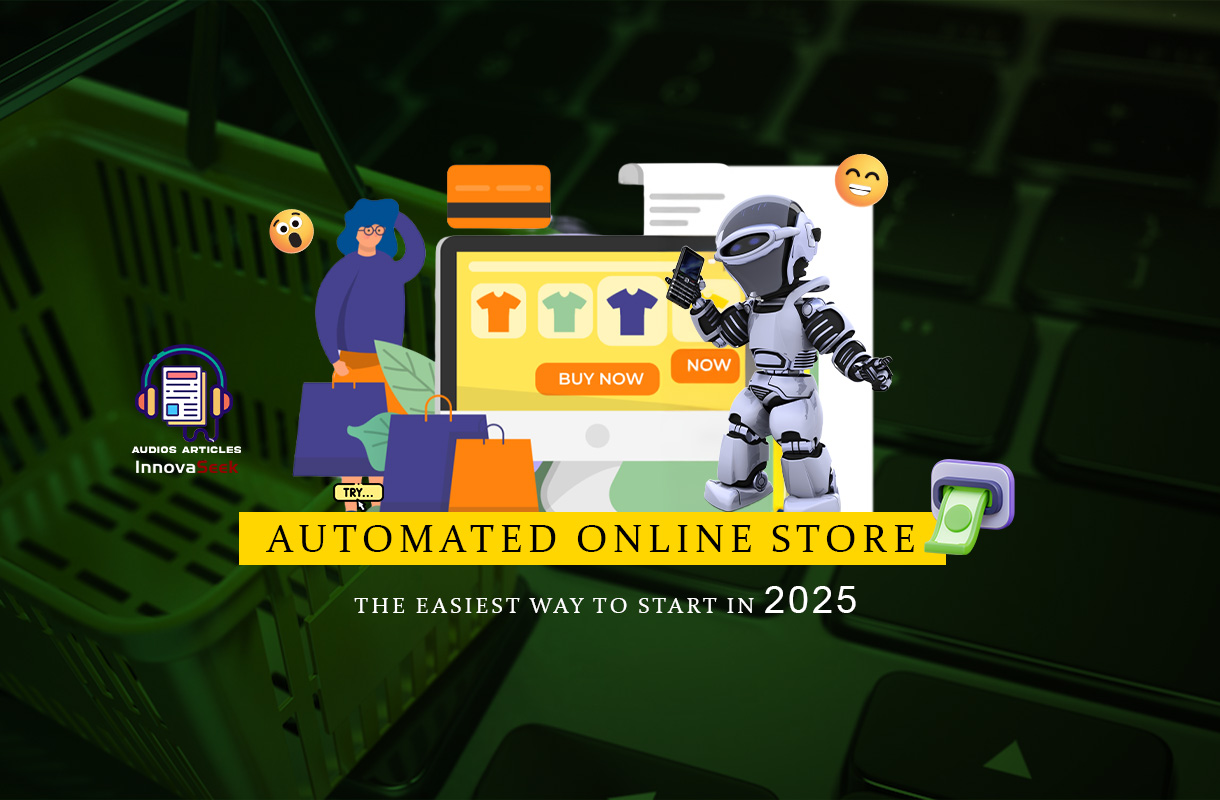
The e-commerce landscape is evolving rapidly, and automation is no longer optional for online stores—it’s essential. An automated online store allows you to streamline operations, reduce manual work, and scale efficiently. Whether you’re a beginner or an established seller, this guide will walk you through the simplest way to build a fully automated store in 2025, with a special focus on n8n, a powerful workflow automation tool.
Why Automation is Crucial for Online Stores
Running an online store involves multiple repetitive tasks—order processing, inventory updates, customer support, and marketing. Automation helps by:
- Reducing manual work – Eliminates time-consuming tasks like order fulfillment and email responses.
- Minimizing errors – Automated workflows ensure consistency in pricing, inventory, and customer communication.
- Improving efficiency – Faster order processing and real-time updates lead to better customer satisfaction.
- Enabling scalability – Handle increased sales without proportional increases in workload.
With the right tools, you can automate nearly every aspect of your store.

Step 1: Choosing the Right E-Commerce Platform
The foundation of an automated online store is a reliable e-commerce platform. The best options in 2025 include:
1. Shopify
- Best for: Beginners and established brands.
- Automation features: Built-in integrations with dropshipping apps, automated email marketing, and AI-powered product recommendations.
- Pricing: Starts at $29/month.
2. WooCommerce
- Best for: WordPress users who want full customization.
- Automation features: Plugins for automated order fulfillment, dynamic pricing, and inventory sync.
- Pricing: Free (but requires hosting).
3. BigCommerce
- Best for: High-growth businesses.
- Automation features: Multi-channel selling, AI-driven merchandising, and automated tax calculations.
- Pricing: Starts at $29/month.
Recommendation: If you want simplicity, Shopify is the best choice. For advanced customization, WooCommerce is ideal.

Step 2: Automating Product Sourcing and Inventory
One of the biggest advantages of an automated online store is eliminating inventory management. Here’s how to do it:
A. Dropshipping
- How it works: Customers place orders → Supplier ships directly to them.
- Best tools:
- DSers (for AliExpress integration)
- Spocket (US/EU suppliers with faster shipping)
- Zendrop (automated order fulfillment)
B. Print-on-Demand (POD)
- How it works: Sell custom-designed products without holding stock.
- Best services:
- Printful (high-quality printing)
- Printify (lower costs with multiple supplier options)
Pro Tip: Use n8n to connect your store with multiple suppliers and automate stock updates.
Step 3: Automating Payments and Checkout
A seamless checkout process improves conversions. Automate payments with:
- Shopify Payments / Stripe – Instant payment processing.
- PayPal & Klarna – Offer flexible payment options.
- Recurring subscriptions – Use apps like ReCharge for subscription-based products.

Automation Opportunity: Use n8n to trigger refunds, send payment reminders, or sync transactions with accounting software.
Step 4: Marketing Automation
Marketing is key to driving sales, but manual campaigns are inefficient. Automate with:
A. Email & SMS Marketing
- Klaviyo – Automated abandoned cart emails and personalized offers.
- Omnisend – Combines email and SMS for better engagement.
B. Social Media & Ads
- Facebook & Google Ads – Use AI-powered tools for automated bidding.
- Chatbots – ManyChat or Tidio for instant customer support.
C. SEO & Content Automation
- Jasper AI – Generate product descriptions and blog posts.
- SurferSEO – Optimize content automatically.
n8n Integration: Automatically sync customer data from ads to your CRM or email marketing tool.
Step 5: Order Fulfillment Automation
Manually processing orders is time-consuming. Automate fulfillment with:
- ShipBob – 3PL service with automated shipping.
- ShipStation – Auto-generates shipping labels.
- Amazon FBA – If selling on Amazon.
Advanced Automation: Use n8n to connect your store with logistics providers for real-time tracking updates.
Step 6: Using n8n for Advanced Automation
n8n is a powerful, open-source automation tool that connects apps and automates workflows without coding. Here’s how to use it for your online store:

Key n8n Automations for E-Commerce
- Automatic Order Processing – Sync new orders to suppliers and update inventory.
- Dynamic Pricing – Adjust prices based on demand or competitor pricing.
- Customer Follow-Ups – Send post-purchase emails or review requests.
- Low-Stock Alerts – Get notifications when inventory runs low.
- Data Sync – Connect Shopify, Google Sheets, and email marketing tools.
Example Workflow:
- Trigger: New order in Shopify.
- Action 1: Send order details to supplier via email or API.
- Action 2: Update inventory in Google Sheets.
- Action 3: Send a thank-you email to the customer.
Cost Breakdown for an Automated Online Store
| Expense | Estimated Cost |
|---|---|
| Shopify / WooCommerce | $29–$99/month |
| Dropshipping App (DSers/Spocket) | $10–$50/month |
| Marketing (Klaviyo, Ads) | $50–$500/month |
| n8n (Self-Hosted or Cloud) | Free–$20/month |
| Total Monthly Cost | $100–$700 |
Final Tips for Success in 2025
- Start with a niche product – Avoid oversaturated markets.
- Test automation workflows – Ensure everything runs smoothly before scaling.
- Monitor performance – Use analytics to refine strategies.
- Stay updated – New automation tools emerge frequently.
Here’s the enhanced version with platform links included:
Conclusion:
“Build an automated online store in 2025 using Shopify or WooCommerce with n8n automation. Our guide shows how to streamline operations and scale efficiently.”
“Create an automated online store with n8n + Shopify. The complete 2025 guide to e-commerce automation.”



